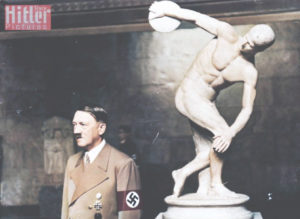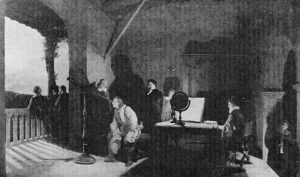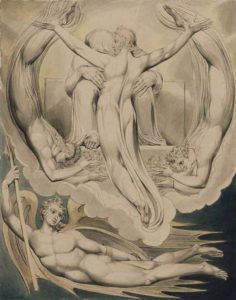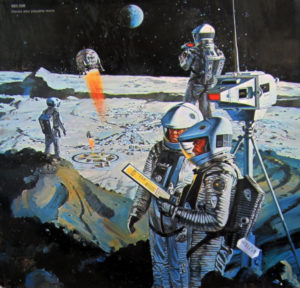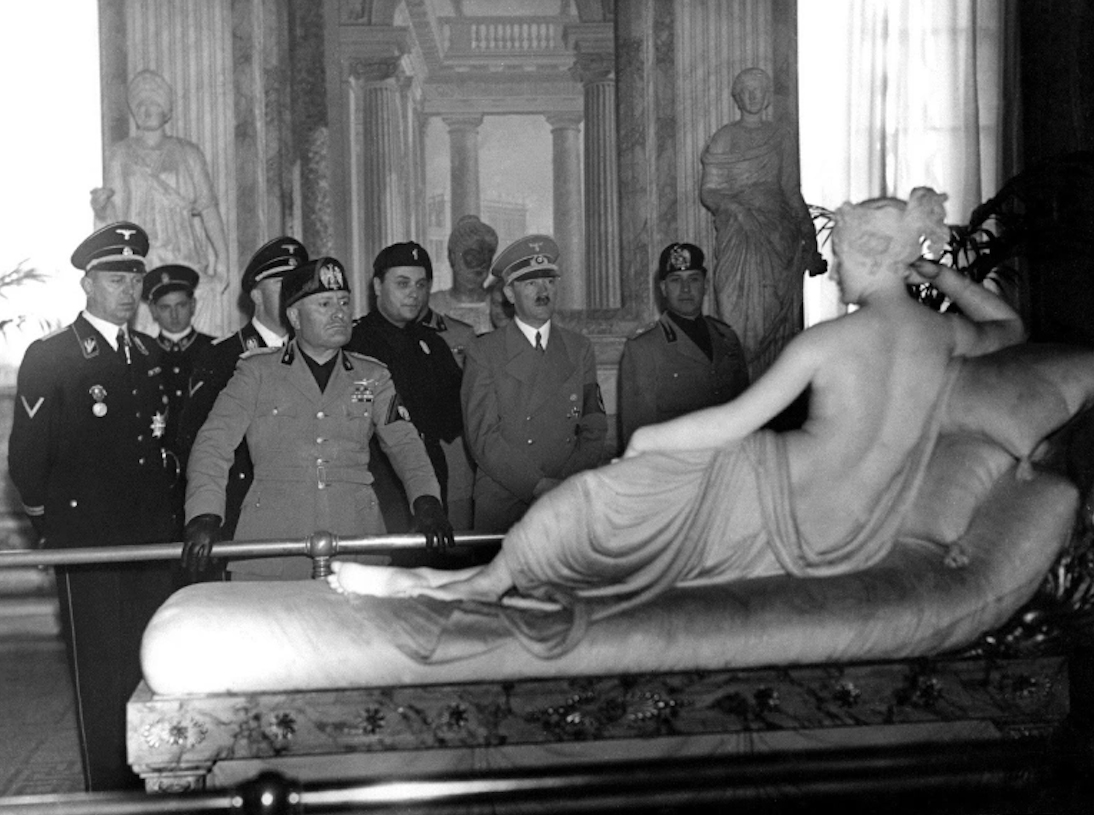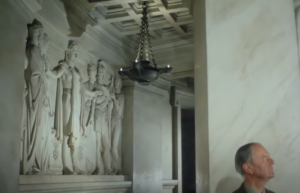against the Cross, 8
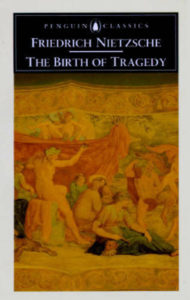 The publication of Die Geburt der Tragödie aus dem Geiste der Musik (The Birth of Tragedy Out of the Spirit of Music) caused so much trouble in the stagnant German-speaking academy that even when Rhode wanted to defend his friend Nietzsche against the attack of their colleagues, he was unable to obtain a professorship in Freiburg.
The publication of Die Geburt der Tragödie aus dem Geiste der Musik (The Birth of Tragedy Out of the Spirit of Music) caused so much trouble in the stagnant German-speaking academy that even when Rhode wanted to defend his friend Nietzsche against the attack of their colleagues, he was unable to obtain a professorship in Freiburg.
We are used to the culture of cancellation in the darkest hour of the West. This month, on the Führer’s birthday for example, Kevin MacDonald expressed his mixed feelings that his ideological enemy at Cambridge University, Nathan Cofnas, had been expelled for daring to talk about race and IQ. But already in 19th-century Europe things were far from an open marketplace of ideas. The aforementioned textual critic of the New Testament, David Friedrich Strauss, whom Nietzsche had read, was also unable to obtain a professorship after the publication of his book (even today academic exegetes don’t even bother to read Richard Carrier’s book about the dubious historicity of Jesus).
Once one understands that the academy is not the proverbial forum for an open marketplace of ideas, but for the ironclad and orthodox transmission of the paradigm of the day, one will understand that only the freelance philosopher will be able to write something worth reading. Always keep in mind that guys like Kant and Hegel didn’t openly contradict the interests of the State or the Church, so their obscurantist philosophies weren’t only tolerated, but promoted.
In The Birth of Tragedy Nietzsche not only expounds the content of his study of the Greeks, but begins to shape his philosophy. The book is a hybrid of philosophy and philology, which is why Nietzsche himself called it a ‘centaur’. It deals with the birth of Attic tragedy, the motives that inspired it, and the causes of its demise. He aimed to interpret tragedy in ancient Greece, which differed from the concept that the learned had of it. The work develops the thesis that two great opposing forces govern art: the Dionysian force and the Apollonian force. These two forces, once united in Greek tragedy, were separated by the triumph of rationality with Socrates. Nietzsche hoped to rediscover this ancient union in the music of Richard Wagner, to whom he dedicated the book.
The Greece of the white sculptures came to us, but originally they were painted. (Something of this can be seen for at least a few seconds in Oliver Stone’s film in a scene of Alexander the Great’s father, though that film is generally Hollywood Greece rather than historical Greece.) And the same can be said of its architectural ruins: they were originally painted in bright colours, as can be seen in some contemporary reconstructions. To understand Nietzsche one would have to colour not only the sculptures and temple reconstructions, but the original pathos of Greek tragedy, insofar as the Germanic psyche of his time was burdened with what we might call an ogre of superego: something like baptising the pagans through the late saintly Socrates, a figure who doesn’t represent the violent origins of Greece and the ensuing tragedy.
For the man of our century, one way to grasp the controversy that Nietzsche’s first book sparked would be to watch a film like the tragedy of Iphigenia and compare it with thousands of Hollywood turkeys where we see no tragedy at all: the drama is simply resolved with a rational and even happy ending. Apollo is present but Dionysus is absent: prolefeed for the proles! If we take into account what we said yesterday about how the degenerate Aryan, emasculated by comfort to the point of losing the tragic sense of life—and Hollywood has played a central role in making us forget about tragedy and believe that life is merely a drama—we will have, perhaps, a distant analogy to what happened after the publication of Nietzsche’s first book.
Without going into the details, which can be read in scholarly biographies, Nietzsche had violated the rules of the philologists’ guild by saying that a German Renaissance could be catapulted by Wagner’s music. In The Birth of Tragedy a holy man, Socrates, was dethroned. I would add that, being physically ugly, Socrates was never a true Greek because in the real Hellas physical ugliness was almost a refutation (being the son of a midwife, the baby Socrates avoided premature infanticide by the eugenicists of the time). According to Nietzsche, the original tragedy was lyrical-musical, like Wagner’s musical tragedies. With Socrates and his calculating reason a dangerous optimism had penetrated the Greek psyche, and the original, deeply pessimistic tragedy died (I really suggest that any fan of Judaizing Hollywood watch the Greek film Iphigenia, linked above, to get a taste of what we are talking about).
Wagner went to great lengths to calm Cosima down from the shock of such iconoclasm, and she herself wrote to Nietzsche: ‘The master must have told you what excitement I have been in, and also that all night long he had to talk to me about it, with all the details’.
Wagner certainly applauded Nietzsche’s daring, but he feared greatly for his academic future. For in turning against the white Greece to which 19th-century Europeans were accustomed, introducing the violent colour of the original culture, as well as advocating a revival of Germanism thanks to Wagner’s musical dramas, the book was no longer a dull text: it was a political essay. By presenting himself not as an obscure Basilian professor whose texts are suitable only for colleagues but as a Dionysian dancer, Nietzsche, besides being too strong for the palate of his classicist contemporaries, was marked in relation to the notorious composer.
These were times when Wagner’s The Ring of the Nibelung—the most pagan and ambitious of his operas—was much talked about in Germany. He was still working on the last of the four operas in that series (see our summary from Wagner’s libretto here). Tannhäuser had been left behind in public conversation and the neo-Christian Parsifal hadn’t yet been composed. Nietzsche couldn’t have imagined that he alone would lead the way in transvaluation while the Wagnerians would take a step backwards. Only the next century Himmler and his kind would take steps forward on the psychological Rubicon instead of the fear that the Rubicon causes by stepping back (say, like the regressive step William Pierce took after the exterminationist The Turner Diaries with his next novel, Hunter, where Pierce introduces a Christian character as the good guy in his drama).
Before Parsifal the medicine that Nietzsche prescribed for the general malaise of the Germanic peoples was still sold in the Wagnerian pharmacy. Richard, in fact, invited Nietzsche, now his herald, and in Cosima’s diary we see that her husband even wept with happiness after the publication of The Birth of Tragedy. Unfortunately, Nietzsche didn’t attend because that winter he suffered from the typical Christmas depression that invaded him on the darkest days of the year.
The King of Bavaria himself, a great friend of Wagner, let it be known via third parties that he had received Nietzsche’s book but didn’t comment on its contents. Ritschl, the representative of academic philology who had been so supportive of the young man, wrote in his notes not intended for publication that the book was ‘a witty drunkenness’. For what was already apparent in this essay was a desire to reorganise German culture and to declare conventional philology, so devoid of bright colours and the tragic meaning of life, dead. For the depressed Nietzsche all that suited him: to fight. He wanted to pick a fight to get out of his depressions!
And the fight actually came. One of the normies of the time, the philologist Ulrich von Wilamowitz-Moellendorf, who like Nietzsche had studied at the boys’ cloister, asked the professor to leave the chair and wrote a pamphlet denouncing The Birth of Tragedy, where he writes: ‘What a shame you inflict, Mr Nietzsche, on Mother Pforta’ and later added that Nietzsche had degraded all that he had been taught as untouchable and sacred. Biographer Ross comments: ‘The serene Hellenism… was like a piece of religion for bourgeois and intellectuals that would not be extirpated’. For Wilamowitz had grasped Nietzsche’s intention to create a new philology based on the original spirit of Ancient Hellas, on that deep blue of the Mediterranean and so distant from the grey skies of northern Europe.
Rhode replied to Wilamowitz and even Wagner himself intervened in the exchange with a published text of his own (ignored by the philologists of course). Wilamowitz in turn replied to Rohde and other professionals intervened. Never before had such a furious controversy raged in philology, and Nietzsche took refuge in a further elaboration of his pregnant philosophy.

